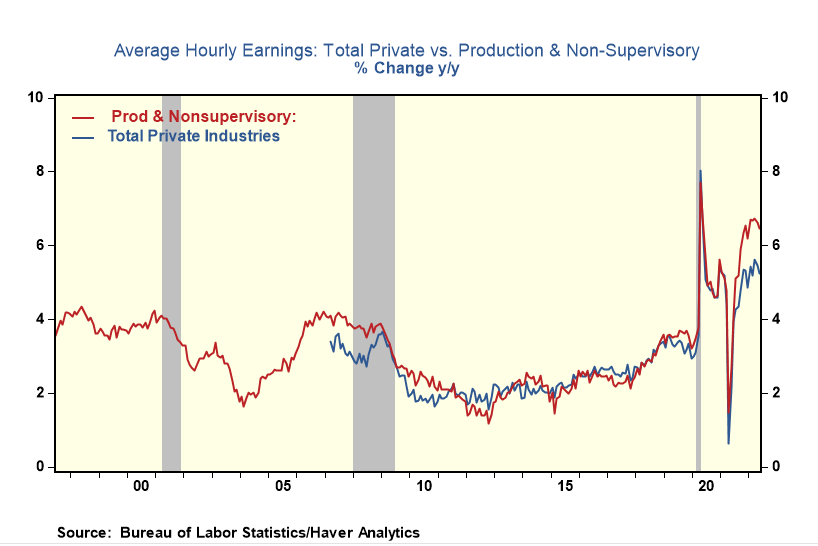Average Hourly Earnings Posted Their Largest Monthly Gain of 2022 in May
- Joe Carson

- Jun 3, 2022
- 1 min read
Tight labor markets continue to drive fast wage gains for most workers. For example, in May, the average wage gain for production and non-supervisory workers rose 0.6%, the most rapid monthly increase of 2022. In the past year, this wage series has increased by 6.5%.
The Bureau of Labor Statistics publishes two wage series in the monthly employment report. Wage data for production and non-supervisory workers, which covers over 80% of the private workforce, is the longest-running wage series, starting in 1965.
The wage series for the entire private sector, including supervisory workers, began in 2007. That series rose 0.3% in May and 5.4% in the past year. However, this wage series does not include bonuses, a large part of compensation for supervisory workers. So it does not provide an accurate or comprehensive picture of labor cost pressures.



Comments